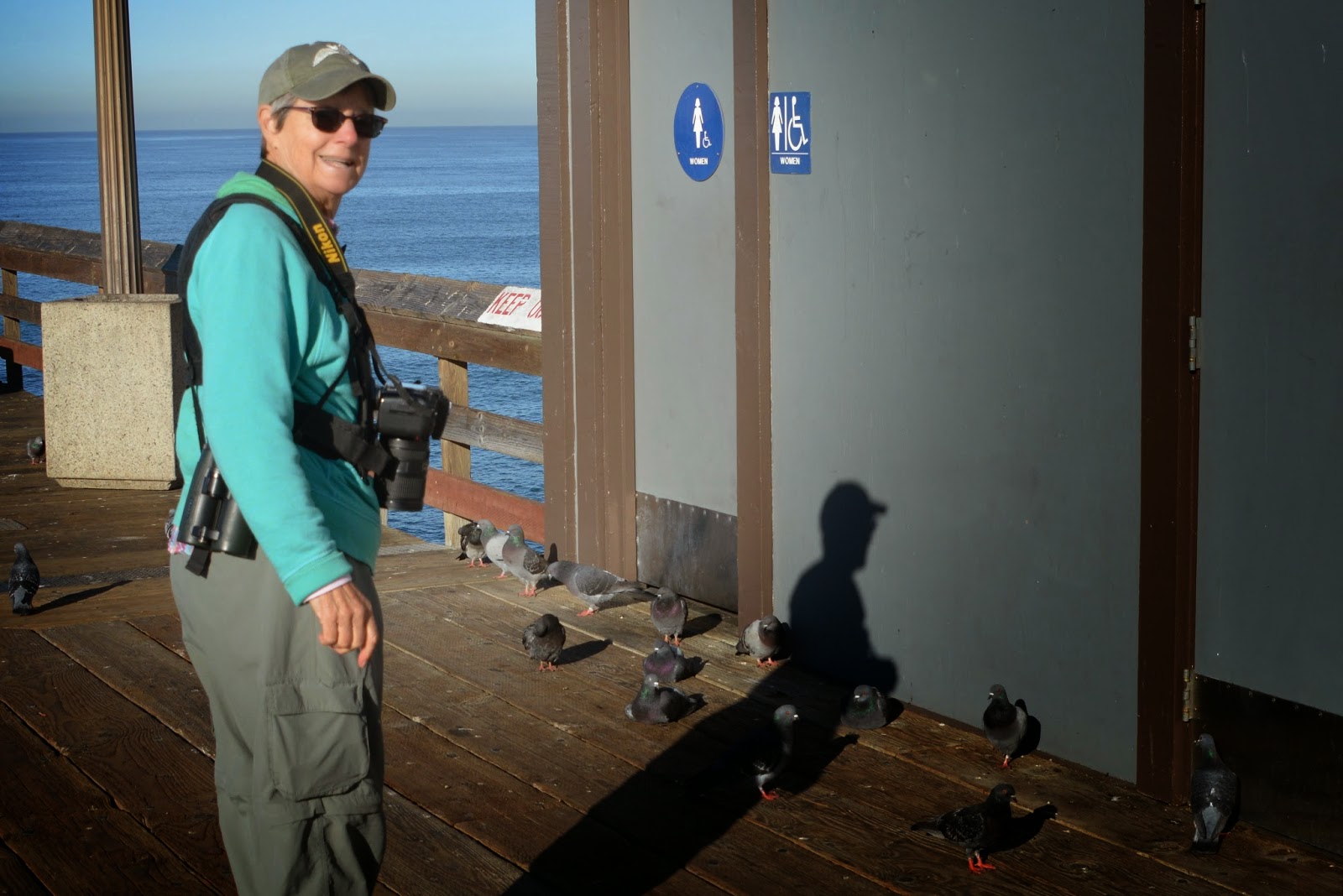 |
| Ridgway's Rail |
On a gorgeous day out near the Tijuana Estuary, I walked with my new friend Libby. It was high tide and a perfect time to find these difficult birds. While walking along the high berm, we spotted 4 of these magical birds. It was definitely a high five moment for both of us. I've only heard this bird once call from the reeds of Tres Ríos near Phoenix. Rails, in general, are very tricky birds to spot. Earlier this year, the Clapper Rail was split into three new bird species thanks to the new DNA analysis happening within the science community. And it takes time to relearn the new names for a split bird species. Not Clapper for us anymore in AZ:)
Meanwhile at the Salton Sea, the waters are receding. Two years ago Las Aventuras went to visit this interesting birding locale. While there, we noticed the shoreline met close to the trail near the Sonny Bono Visitor Center. This time around, the waters had disappeared from several locations and made the spotting of birds much more difficult. I'm not sure what will happen to this place but it is an important watering hole for birds. I found my ONE Yellow-footed Gull off in the distance at the end of the Rock Hill trail. This is their northern most range in the US. They are much more common in Mexico, especially around the city of Rocky Point.
 |
| Yellow-footed Gull(pic taken in Mexico) |
 |
| Tricolored Blackbird |
When the wings are closed, there is a whitish wingbar present. So I took careful observation notes to make sure I was seeing the right bird! Here's a short video on the Tri-colored Blackbirds from UC-Davis. I believe it was filmed around October of this year.
Back home the race was on. A White-winged Scoter and two Black Scoters were seen in a large body of water known as Lake Pleasant.
 |
| White-winged Scoter |
 |
| Loggerhead Shrike |
 |
| Juvenile Male Black Scoter |
 |
| Red-tailed Hawk getting chased by a Common Raven |
.....I somehow finished the year alive. Exhausted. But alive. It has been an amazing year, and I am glad it is over. Birding as a sport interferes with family, friends and sleep! I'll have my 2014 wrap up next week. For now, I sip my coffee and watch my Tucson birds from my dining room window. And it feels good to be normal again.























































